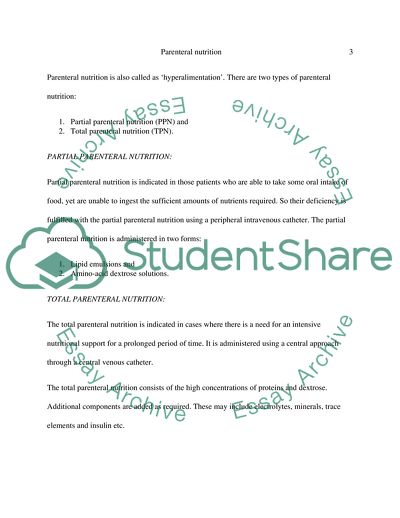Cite this document
(Parenteral Nutrition: principles, indications and complications Research Paper, n.d.)
Parenteral Nutrition: principles, indications and complications Research Paper. https://studentshare.org/medical-science/1771885-principles-of-the-parenteral-nutrition
Parenteral Nutrition: principles, indications and complications Research Paper. https://studentshare.org/medical-science/1771885-principles-of-the-parenteral-nutrition
(Parenteral Nutrition: Principles, Indications and Complications Research Paper)
Parenteral Nutrition: Principles, Indications and Complications Research Paper. https://studentshare.org/medical-science/1771885-principles-of-the-parenteral-nutrition.
Parenteral Nutrition: Principles, Indications and Complications Research Paper. https://studentshare.org/medical-science/1771885-principles-of-the-parenteral-nutrition.
“Parenteral Nutrition: Principles, Indications and Complications Research Paper”. https://studentshare.org/medical-science/1771885-principles-of-the-parenteral-nutrition.


